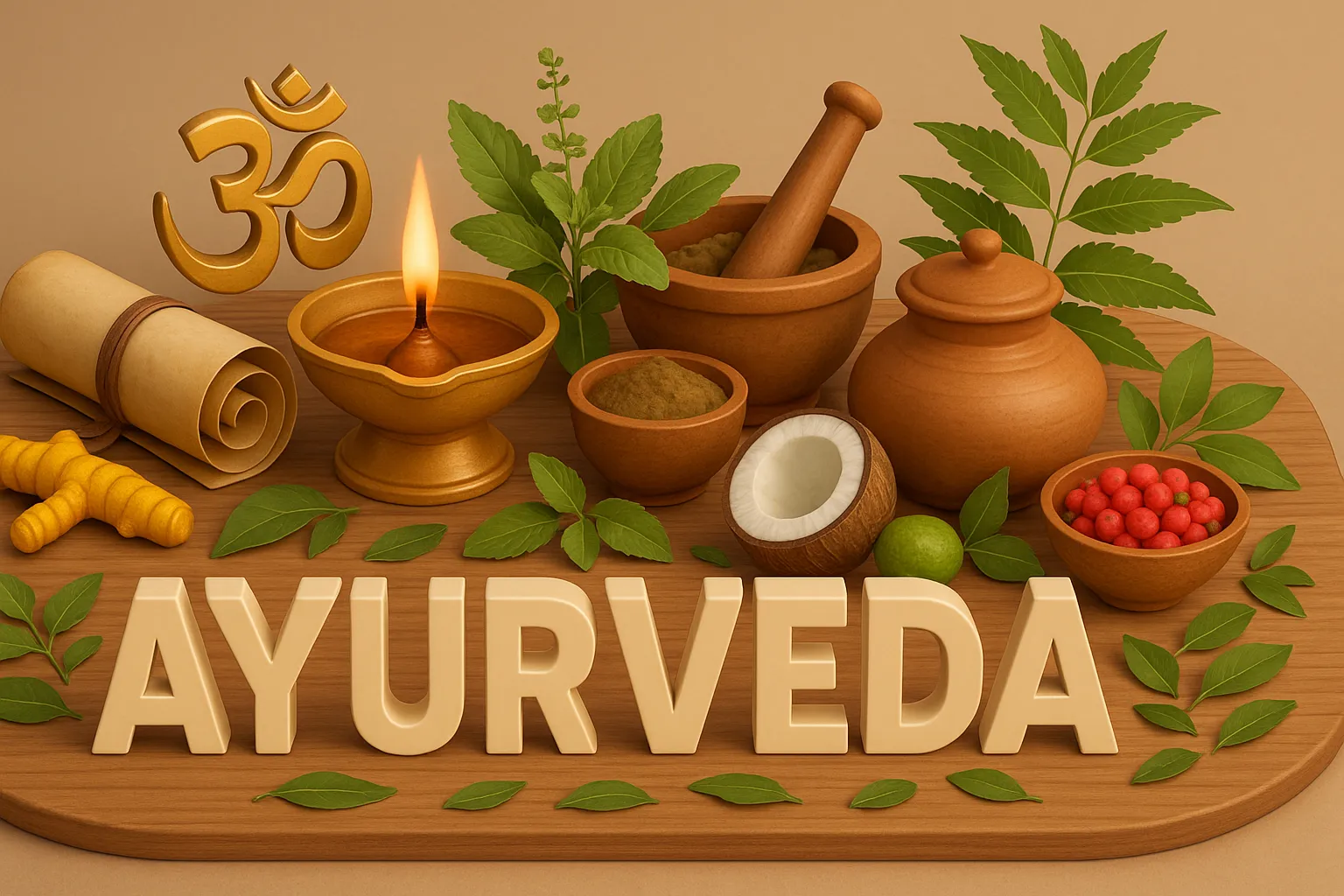Ayurveda is an ancient Indian system of medicine focusing on balance of body, mind, and spirit through natural therapies and herbs.
Origin and Historical Context
- Ayurveda, one of the oldest codified medical systems, dates back over 3,000 years. Major texts include:
- Charaka Samhita – Focuses on internal medicine.
- Sushruta Samhita – Emphasizes surgery and anatomy.
- Ashtanga Hridaya – A comprehensive guide on Ayurvedic principles and treatments.
Basic Principles of Ayurveda
-
Panchamahabhuta Theory:
- Everything in the universe, including the human body, is composed of five elements:
- Earth (Prithvi)
- Water (Aap)
- Fire (Tejas)
- Air (Vayu)
- Ether/Space (Akasha)
-
Tridosha Concept:
- Balance of three biological energies governs health:
- Vata (Air + Ether): Controls movement, circulation, and nerve impulses.
- Pitta (Fire + Water): Manages digestion, metabolism, and transformation.
- Kapha (Earth + Water): Maintains structure, lubrication, and tissue growth.
- Imbalance among doshas leads to diseases.
-
Sapta Dhatus (Seven Body Tissues):
- Rasa (plasma), Rakta (blood), Mamsa (muscle), Meda (fat), Asthi (bone), Majja (marrow/nervous tissue), Shukra/Artava (reproductive tissue).
-
Ojas & Prakriti:
- Ojas: The essence of all dhatus, linked to vitality and immunity.
- Prakriti: Individual’s unique constitution, guiding personalized treatment.
Key Therapeutic Approaches
- Shodhana (Cleansing): Panchakarma detoxification methods (Vamana, Virechana, Basti, Nasya, Raktamokshana).
- Shamana (Palliative Care): Use of herbs, diet, and lifestyle changes to balance doshas.
- Pathya-Apathya (Diet & Lifestyle Guidance): Preventive healthcare through daily routines (Dinacharya) and seasonal regimens (Ritucharya).

